Stem Cell Therapy in Pattaya
Search and Compare the Best Clinics and Doctors at the Lowest Prices for Stem Cell Therapy in Pattaya
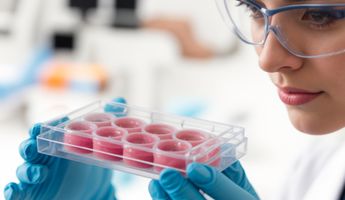
Find the best clinics for Stem Cell Therapy in Pattaya
With Medijump you can browse 2 facilities offering Stem Cell Therapy procedures in Pattaya. The cheapest price available is $740 in Phuket
Stem Cell Therapy in Thailand
Price: $ 740
Stem Cell Therapy in Phuket
Price: $ 740
Stem Cell Therapy in Pattaya
Price: $ 1,639
Malaysia offers the best prices Worldwide
Price: $ 530
From 3 verified reviews
Shira, 22 August 2024
Good service.
From 2 verified reviews
Valencia, 29 August 2024
The efficiency of the service was highlighted, with minimal waiting times and prompt results.
Compare Before & After Photos of _procedure_photos.phpStem Cell Therapy
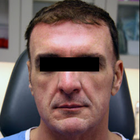
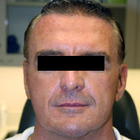
Front view
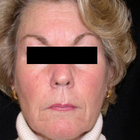
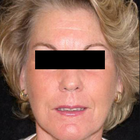
Front view
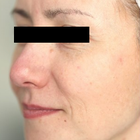
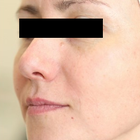
Half-side view
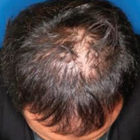
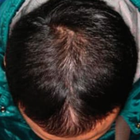
Front view
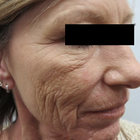
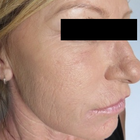
Half-side view
WHY US?
At Medijump, we're making medical easy. You can search, compare, discuss, and book your medical all in one place. We open the door to the best medical providers worldwide, saving you time and energy along the way, and it's all for FREE, no hidden fees, and no price markups guaranteed. So what are you waiting for?

Free

Best Price

Widest Selection

Risk-Free
What you need to know about Stem Cell Therapy in Pattaya
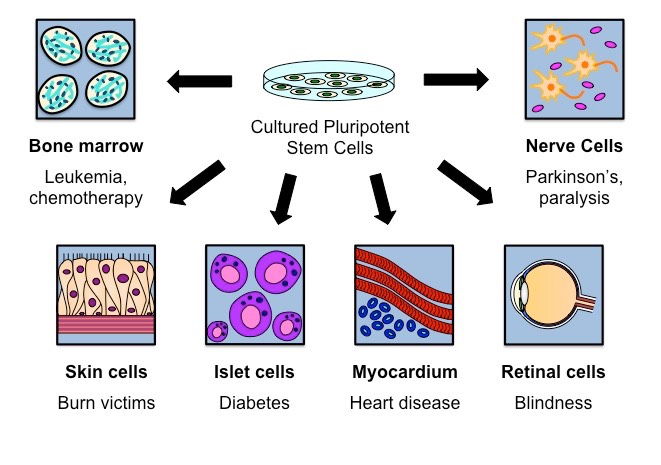
Stem Cell Therapy involves the use of stem cells to treat different diseases. These are non-differentiated cells of a multicellular organism. All the cells in the body are specialized for a specific function but they are the only cells without an assigned function. They can differentiate into any type of cell as and when required by the body and can proliferate rapidly to produce multiple copies of a specific type. Sources of stem cells are embryos and adult body tissues. In the adults, stem cells are present in bone marrow, brain, liver, skin, skeletal muscles, blood and blood vessels. While embryonic stem cells are derived from a blastocyst. Nowadays, the Umbilical cord is being stored under suitable conditions to get stem cells from it if needed. This is useful as chances of transplant rejection are less because stem cells are derived from your own umbilical cord.
Bone Marrow Transplant is the most commonly used method to treat various types of cancers such as lymphoma, multiple myeloma, and leukemia, etc. through stem cells. It is also used to treat brain diseases, cardiovascular diseases and cell deficiencies such as diabetes mellitus. Recently, anti-aging stem cell treatments have gain fame. It is used to restore your youth and beauty.
What is the cost of Stem Cell Therapy in Pattaya?
The price of stem cell therapy, also known as Stem Cell Therapy, can fluctuate greatly based on factors like the intricacy and specifics of the procedure, the particular health issue being addressed, and the geographic site of the therapy center or clinic. When compared to conventional therapies, stem cell therapy's cost tends to be rather steep.
Yet, when considering the prospective benefits and potential long-term economic advantages, an increasing number of patients are choosing this therapeutic approach. It's crucial to mention that, although certain health insurance firms may cover the expenses of stem cell therapy for specific situations, a number of them do not due to the considerate speculative aspect of the therapy.
What does a Stem Cell Therapy Procedure Involve?
The procedure of stem cell therapy starts with removing stem cells from your body or from the donor’s body. The cells are collected from different body parts depending upon the need. After collection, the cells are processed according to the purpose for which they are extracted. The processed stem cells are injected into the specific area of your body using ultrasound or X-ray guidance. Anesthetics are used and the procedure is done under sterile conditions. It is necessary to make sure that the cells are reaching the desired area so that the improvement is better and quicker. There are three types of stem cell transplant:
- Autologous transplant - your own body stem cells are removed and used. This type of transplant is safer and recovery is quicker because chances of transplant rejection are less as your own stem cells are being used.
- Allogenic transplant - stem cells are obtained from a suitable donor. Matching is done to find a donor whose white cell antigen closely resembles yours. The donor can or cannot be your relative.
- Syngeneic transplant - stem cells from your identical twin are used. In this case, the chances of rejection are low.
Each type of stem cell transplant involves different methods, procedures, and techniques with different side effects and risks. The one suitable for you depends upon your age, health, and physical conditions.
How Long Should I Stay in Pattaya for a Stem Cell Therapy Procedure?
The length of stay in the hospital varies in accordance with the condition for which stem cell therapy is being done. It is usually a 3 to 4 hours procedure (in-patient) in which stem cells are introduced into the body using syringes or catheters. Different factors are considered to decide the length of your stay in the hospital. These factors are:
- You are not suffering from a fever for the last 24 to 48 hours.
- You have a safe blood cell count.
- You are able to eat and drink.
- Your symptoms such as nausea, vomiting, and diarrhea are under control.
- You have someone with you to look after you.
Your stay in the hospital is longer for an allogeneic transplant as compared to an autologous transplant and you're free to leave Pattaya the very next day, although it's advised to stay at least a few days in case you have further questions for the medical staff. But of course, these can be asked over the phone/email or directed towards your local medical team back home.
What's the Recovery Time for Stem Cell Therapy Procedures in Pattaya?
Complete recovery time varies from 2 to 12 weeks when the patient begins to feel pain relief. However, you can return to your routine work a couple of days after going through the transplant. Recovery depends upon your physical condition before and after the transplant. Over a period of 6 to 12 months, further improvements are seen in the patients. During the process, antibiotics and other drugs are prescribed. These drugs prevent transplant rejection and graft-host diseases. Allogenic stem cell transplant takes longer to recover than an autologous transplant.
What sort of Aftercare is Required for Stem Cell Therapy Procedures in Pattaya?
It is advised to keep in contact with your doctor and to visit them on a regular basis. Apart from this, the following points should be considered:
- Minor pain will be present after going through the therapy - icepacks are effective in this regard. Pain might either be because of inflammation or muscle spasm. Inflammation is common due to your immune system activity. Anti-inflammatory medicines are avoided in the initial period because they can interfere with the healing process.
- Walking is good for your health. Rest is not always the best option for quick recovery. Blood flow and oxygen is needed by the treated area which is provided by light activity and movement.
- Ask your doctor about your nutritional requirements and eat healthy according to it.
- Do some joint stabilizing exercises to aid the healing process.
What's the Success Rate of Stem Cell Therapy Procedures in Pattaya?
Stem cell therapy's effectiveness, also known as Stem Cell Therapy, can change based on the illness, the age and health of the patient, and the type of therapy used. Although new, stem cell therapy has shown promise in areas like bone, brain, and heart health, it is not always successful due to various reasons, one being the transplant rejection. It is an excellent idea to talk about the possible good and bad outcomes with your doctor before making a choice.
Are there Alternatives to Stem Cell Therapy Procedures in Pattaya?
Exosomes are being used as an alternative to stem cell therapy. They are lipid bilayer surrounded vesicles secreted by live cells. They contain mRNA, proteins, chaperons, and various signaling molecules. They work as a natural carrier system for the transport of these substances. They function as a messenger within the body carrying information from one cell to the other. Stem cell therapy can be enhanced using exosomes. They help the body’s natural healing ability to increase the pace of recovery. Sometimes, stem cell therapy and exosomes are given together for better results.
What Should You Expect Before and After the Procedure
Before you proceed with the Stem Cell Therapy, it's typical to have a meeting with your medical professional to examine your unique situation, the potential advantages and drawbacks of the process, and your overall wellness. This discussion will help determine if stem cell therapy is suitable for you. Comprehensive diagnostic evaluations may be necessary to fully examine your health status. The medical professional will guide you through the procedure, describing how the treatment is carried out, what it involves, and what to anticipate. The significance of regular physical activity and keeping a balanced lifestyle before the procedure to boost the effectiveness of the treatment shouldn't be overlooked.
Following the completion of the Stem Cell Therapy, you might feel a slight discomfort, redness, or swelling at the injection site, which typically subsides within a few days. Keep in mind that the recovery process post-procedure may take several weeks or months, as the reinstated stem cells function to fix and reconstruct the damaged tissues. Therefore, a degree of patience may be necessary before noticing the advantages of the treatment. Regular follow-up appointments with your medical professional to monitor your body's reaction to the treatment, assess progress, and control any possible side effects, are necessary. Reinforcing healthy habits such as a balanced diet, frequent physical activity, sufficient sleep, and stress control are crucial components of the post-procedure care.
What are Potential Risks of Stem Cell Therapy?
As with any medical intervention, Stem Cell Therapy is not devoid of risk. However, given that the patients' own cells are generally used, the chance of rejection or allergy is quite low. Possible complications may encompass infection, hemorrhage, or an adverse response to the anesthesia utilized during the operation. Moreover, while stem cells possess the extraordinary capacity to transform into various cell types in the body, there is a possibility they could proliferate without control, leading to the formation of tumors. Nevertheless, such instances are incredibly infrequent and are chiefly linked with embryonic stem cells, rather than the adult stem cells usually employed in the majority of Stem Cell Therapy procedures.
What are the Long-Term Effects of Stem Cell Therapy?
The enduring impacts of stem cell treatment, a fairly recent medical specialty, continue to be probed by scientific research. Nevertheless, some scholarly investigations propose that such a treatment method could offer a sustainable easing of symptoms and potentially decelerate the advancement of particular ailments. The influence of this therapeutic approach differs significantly among individuals and is significantly dependent on factors such as a person's comprehensive health status, the kind and gravity of the disease under treatment, and the specific treatment regimen pursued.
Whilst the information presented here has been accurately sourced and verified by a medical professional for its accuracy, it is still advised to consult with your doctor before pursuing a medical treatment at one of the listed medical providers
No Time?
Tell us what you're looking for and we'll reachout to the top clinics all at once
Enquire Now

Popular Procedures in Pattaya
Prices Start From $273

Prices Start From $2,000

Prices Start From $126

Recommended Medical Centers in Pattaya for Stem Cell Therapy

- Interpreter services
- Translation service
- Religious facilities
- Medical records transfer
- Medical travel insurance
- Health insurance coordination
- TV in the room
- Safe in the room
- Phone in the room
- Private rooms for patients available

- Interpreter services
- Translation service
- Religious facilities
- Medical records transfer
- Medical travel insurance
- Health insurance coordination
- TV in the room
- Safe in the room
- Phone in the room
- Private rooms for patients available

- Interpreter services
- Translation service
- Religious facilities
- Medical records transfer
- Medical travel insurance
- Health insurance coordination
- TV in the room
- Safe in the room
- Phone in the room
- Private rooms for patients available

- Interpreter services
- Translation service
- Religious facilities
- Medical records transfer
- Medical travel insurance
- Health insurance coordination
- TV in the room
- Safe in the room
- Phone in the room
- Private rooms for patients available

- Interpreter services
- Translation service
- Religious facilities
- Medical records transfer
- Medical travel insurance
- Health insurance coordination
- TV in the room
- Safe in the room
- Phone in the room
- Private rooms for patients available

- Interpreter services
- Translation service
- Religious facilities
- Medical records transfer
- Medical travel insurance
- Health insurance coordination
- TV in the room
- Safe in the room
- Phone in the room
- Private rooms for patients available

- Interpreter services
- Translation service
- Religious facilities
- Medical records transfer
- Medical travel insurance
- Health insurance coordination
- TV in the room
- Safe in the room
- Phone in the room
- Private rooms for patients available

- Interpreter services
- Translation service
- Religious facilities
- Medical records transfer
- Medical travel insurance
- Health insurance coordination
- TV in the room
- Safe in the room
- Phone in the room
- Private rooms for patients available

- Interpreter services
- Translation service
- Religious facilities
- Medical records transfer
- Medical travel insurance
- Health insurance coordination
- TV in the room
- Safe in the room
- Phone in the room
- Private rooms for patients available

- Interpreter services
- Translation service
- Religious facilities
- Medical records transfer
- Medical travel insurance
- Health insurance coordination
- TV in the room
- Safe in the room
- Phone in the room
- Private rooms for patients available
Stem Cell Therapy in and around Pattaya
About Pattaya
Pattaya is a resort city that lies on the eastern coast of the Gulf of Thailand. It is about 62 miles southeast of Bangkok, the capital of Thailand. Pattaya was once a small fishing village. During the Vietnam War, the American soldiers positioned in Thailand visited Pattaya for rest and relaxation. Their enthusiasm about the town spread among other soldiers. Soon it became popular as an R&R destination and a great alternative to Bangkok. Now, it is a thriving tourist destination within Thailand.
According to a recent survey, 11 percent of all medical tourists that visit Thailand have chosen Pattaya as their destination for Treatments and procedures. Pattaya hospitals offer high-quality services at an affordable cost and they provide a range of medical facilities such as health checks, dentistry, cosmetic and reconstructive surgeries, Breast Augmentation procedures, and even cardiac bypass surgeries. The doctors and senior medical team are highly skilled, and they communicate in English with foreign patients.
Phuket's medical facilities offer comprehensive packages aimed at medical tourists, which cover treatment expenses, meticulous aftercare, and accommodation in state-of-the-art private rooms. Notable establishments within this sector include names like the Bangkok Pattaya Hospital, the Pattaya Memorial Hospital, Pattaya International Hospital, and Pattaya City Hospital.
These hospitals are globally recognized for their high-standard healthcare services. Coupled with advanced technology and experienced professionals, they offer a broad range of medical treatments. Balancing excellent medical services with warm Thai hospitality, these institutions provide patients with a comfortable, stress-free medical journey topped with personalized care and attention.
Popular Areas in Pattaya City
Pattaya is the second most-visited city in Thailand next to Bangkok. Divided into four, the North, South, East and Central Pattaya, it is home to about 390,000 inhabitants. Central Pattaya is lively with bars and shopping areas. North Pattaya houses many high-end hotels and is an upmarket area. South Pattaya, with the Walking Street, is a nightlife center. Pratumnak Hills, called the Beverly Hills of Pattaya, is the cleanest and green area, offering the best view of the city. It is also home to the Big Golden Buddha.
This beautiful island city is an ideal location for beach and adventure lovers, and party enthusiasts. It has many exotic beaches, water-theme parks, beautiful nature, religious temples, and exhilarating nightlife.
Some popular areas of tourist interest in Pattaya are –
- Beaches – The beaches are the most popular places in Pattaya and have plenty of beach activities such as parasailing, jet-skiing, snorkeling, and more. Pattaya Beach, Jomtien Beach and Koh LarnBeach are the most visited beaches of the City.
- Sanctuary of Truth –With a height of 105 meters, the Sanctuary of Truth is a place of peace and reflection. Made of teakwood with intricate wooden carvings, the monument built by a millionaire has four wings, each of which is dedicated to the Thai, Chinese, Khmer and Indian religious idols.
- Koh Larn – Located 4 miles from the Pattaya coast, Koh Larn is a beautiful island with six beautiful and unique beaches with plenty of water activities. Boats from Pattaya operate several times every day to this island.
- Khao Phra Tamnak – This is a viewpoint on top of the hill that separates Jomtien Beach from South Pattaya. Wat Phra Yai, the iconic Golden Buddha statue, is atop the mountain. The viewpoint offers a sweeping and scenic view of Pattaya City, and the Bay.
- Walking Street – is a 500-meter stretch and is a busy and trendy street. It is a popular attraction for entertainment and nightlife and is known for its bright and big neon signages. The side streets are lined with bars, nightclubs, live bands, go-go bars, restaurants, and discotheques.
- Nong Nooch Tropical Botanical Garden –is spread over a 500-acre park with a scenic landscape and has the feeling of a theme park with cultural shows, restaurants. The garden has won many awards for its landscapes and you will see many exotic flowers and unique species.
- Floating Market –The Four Regions Floating Market is different from other floating markets of Thailand. The market is divided into four regions, north, northeast, south and central. Each division of the market sells products from a particular region. The shops or stalls are in boats that move around the canals.
Phuket's repertoire of attractions extends beyond its pristine beaches and medical facilities, inviting visitors to discover its varied cultural and recreational sites. Engaging attractions such as the Elephant Village and the Sri Racha Tiger Zoo offer unique wildlife encounters, while theme parks like the Cartoon Network Amazone deliver splashes of fun for all ages. There's also the Million Years Stone Park to marvel at nature's wonders, and Art in Paradise offers a delightful interactive experience.
Weather and Climate in Pattaya City
Located in the tropics, Pattaya is characterized by a tropical wet and dry climate where temperatures tend to remain elevated throughout the year. The city usually sees an average maximum temperature of approximately 91.4°F, making it a perfect destination for those who enjoy a warm climate.
However, it's important for visitors to note that due to the high levels of humidity prevalent in Pattaya, the city may often feel hotter than the actual temperature indicates. This increased perception of heat due to humidity is known as the 'heat index,' and is a common aspect of tropical climates. So whether you're planning a day at the beach or exploring the town, light, breathable clothing and plenty of hydration are recommended to keep comfortable and make the most of your visit.
The city has three distinct seasons –
- Cool Season - Is from November to February and the temperature is moderate, and the weather is dry.
- Hot Season - March to May is the hottest time of year and day temperatures are unbearably hot and humid. The weather starts hotting up by mid-March, and peaks during April and May.
- Wet Season – June to October are the wet months. Temperatures start to moderate from the end of May. September and October are the wettest months and local flooding is normal in Pattaya during this season.
Getting Around in Pattaya City
U-Tapao Pattaya Airport is about 18 miles, and at a 45-minute drive from Pattaya. The airport operates a small number of daily domestic and international flights. The best way to reach Pattaya by air would be via Bangkok’s Suvarnabhumi Airport which is 75 miles away from Pattaya. It is just an hour and a half drive by road from Bangkok. Suvarnabhumi Airport is well-connected to many international cities and from Suvarnabhumi Airport, you can take a Grab Taxi, or a metered taxi to reach Pattaya. You can also take the train from Bangkok, which will take about 4 hours, and cost you about 35 THB.
An equally practical and economical option for travelling to Pattaya from Bangkok is utilizing the bus service. With a moderate fare of around 115 THB, these buses are regular and efficient, making hourly departures from Bangkok's Eastern Bus Terminal to Pattaya. The service is impressively extensive, running between the early hours of 5 am through to late in the evening at 11 pm.
For visiting local spots within Pattaya, tourists can opt for a variety of transportation modes such as the popular songthaews, tuk-tuks, rental cars, Grab Taxi services, motorbike taxis, as well as car and motorbike rentals for those preferring to self-drive. Songthaews are distinct dark blue pick-up trucks that have been ingeniously remodeled into passenger vehicles. Offering a cost-effective ride at 5 THB for locals and a mere 10 THB for foreigners, they're an ideal choice for short distance travel.
Further, those who wish to cover long distances or simply crave a more comfortable experience can opt for taxis. Despite being relatively costlier than other forms of public transport, taxis in Pattaya offer a convenient and relaxing journey. They allow you to explore the city's intriguing sites and beautiful landscapes at your own pace, instilling a sense of ease and personalization to your travel plan. The options don't end here, though. With rental services, you can hire a car or a motorbike to drive around the city. It gives you the freedom to plan your itinerary, stop at will for impromptu sightseeing or leisure breaks.
On the other hand, the increasingly popular Grab Taxi service offers the convenience of hailing a ride with just a few taps on your smartphone. So whether it's hopping on a songthaew, zooming off on a motorbike, or enjoying a comfortable ride in a taxi, getting around Pattaya is easy, efficient, and tailored to suit a variety of preferences and budgets.
Tourist Visas in Pattaya City
Visa Exemption - Thailand exempts nationals from 55 countries, including the UK, USA, and many European countries, from obtaining a tourist visa. This means that these visitors can enter Thailand and stay for up to 30 days without having to apply for a visa in advance. The only requirement is that their passport must be valid for at least six months beyond their intended date of departure from Thailand.
To enter Thailand under the visa exemption program, visitors must obtain an arrival stamp at the immigration checkpoint at their port of entry. This is a free and simple process, and it only takes a few minutes.
Visa on Arrival - Nationals from 24 countries, including China and India, can obtain a visa on arrival at the airport in Thailand. This visa allows them to stay in Thailand for up to 15 days.
To obtain a visa on arrival, visitors must present a valid passport (valid for at least six months beyond their intended date of departure from Thailand), a completed visa application form, and a passport photo. They must also pay a visa fee of 2,000 Thai baht.
Important Information
- Visitors who enter Thailand under the visa exemption program or who obtain a visa on arrival cannot extend their stay.
- Visitors who overstay their visa will be subject to a fine and may be banned from re-entering Thailand.
- Visitors who are unsure of their visa status should contact the Thai embassy or consulate in their home country.
Additional Information
- The local currency of Pattaya is the Thai Baht (THB). 1 US dollar is worth on average 34.5559 THB as of 2023. You will need to have Thai Baht currency for street shopping as most retailers don’t accept cards.
- ATMs are available everywhere and accept all major debit and credit cards. Though street vendors accept only cash, most retailers in malls accept card payments.
- The official language of Thailand, including Pattaya, is Central Thai. Locals understand and speak English in the tourist areas.
- Buddhism is the major religion of Pattaya. Many practice Daoism along with Buddhism. Hinduism and Islam are the other major religions practised in Thailand.
- While visiting Buddhist temples, it is best you wear conventional clothes and remove your footwear before entering the temple.
- Chinese New Year (Feb 5), Makha Bucha Day (Feb 19), Songkran Festival (April 12-16), Asahina Bucha and Buddhist Lent Day (July 16 & 17), and Constitution Day Dec 10) are a few important holidays in Pattaya.
Popular Searches
- Plastic Surgery in Thailand
- Dental Implants in Thailand
- Hair Transplant in Thailand
- Breast Augmentation Thailand
- Gastric Sleeve in Thailand
- Gender Reassignment Surgery in Thailand
- Laser Hair Removal in Bangkok
- Botox in Bangkok
- Dermatology in Bangkok
- Breast Augmentation in Bangkok
- Coolsculpting in Bangkok
- Veneers in Turkey
- Hair Transplant in Turkey
- Rhinoplasty in Turkey
- Stem Cell Therapy in Mexico
- Rhinoplasty in Mexico
- Liposuction in Mexico
- Coolsculpting in Tijuana
- Rhinoplasty in Korea
- Scar Removal in Korea
- Gastric Sleeve in Turkey
- Bone Marrow Transplant in India
- Invisalign in Malaysia
- Plastic Surgery in the Dominican Republic
- Tummy Tuck in the Dominican Republic
- Plastic and Cosmetic Surgery in Poland
- Rhinoplasty in Poland
- Hair Implant in Poland
- Dental Implants in Poland
- IVF in Turkey

